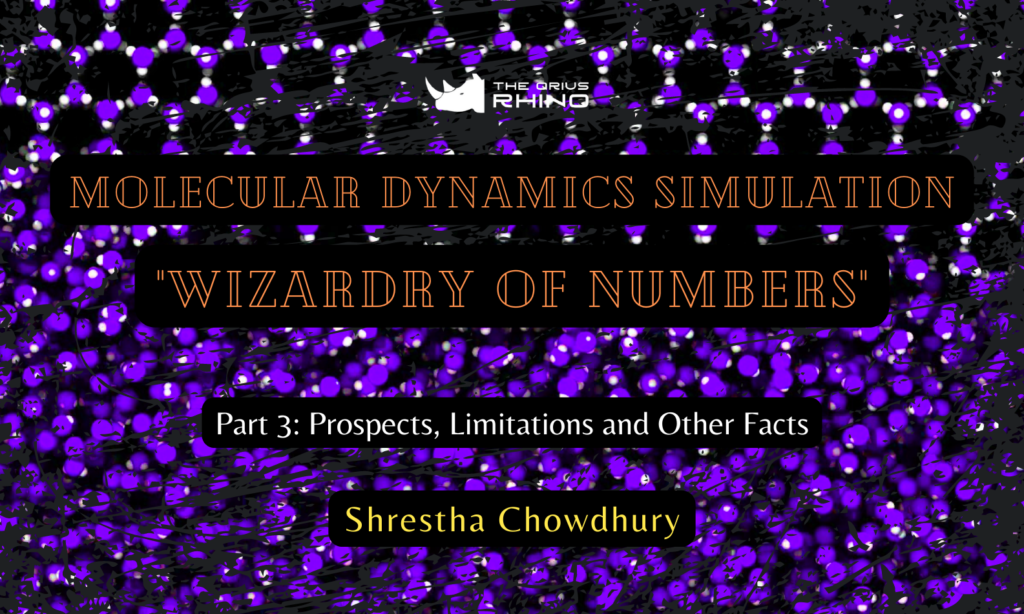
Designed by Diptatanu Das
Part 3: Prospects, Limitations and Other Facts
In the first part of this series, we understood understood the thermodynamic background and evolution of MD simulations technique. In the second part, we have looked into some of the early challenges and developments in MD simulations, followed by understanding some of the basic concepts and steps involved in performing a successful simulation. Here, in the concluding part of the series, we will read about some of the pros and cons of MD simulations, future scopes, and some other facts.
Advantages, Limitations of MD simulation
No doubt, simulations act as a complementary tool to experimental techniques. They record the position and motion of every atom at every point of time – a task that is difficult to track down by experiments. One can precisely control the conditions like temperature, pressure, the initial configuration of protein during the simulations. Thus, one can obtain a very detailed understanding of the phenomena under investigation by explicitly manipulating minor changes in the system.
Regarding limitations, the timesteps are too short for numerical stability, hence a large number of time steps are required for obtaining trajectory. Simulations involving milliseconds is very rare until recently. The fidelity of the results from a simulation remains an issue as the molecular force field parameters are essentially approximations. Real-life processes involve simultaneous making and breaking of covalent bonds but classical MD cannot do so. Thus, many minute details while studying a process get overlooked.
Future Scope of Simulations
MD studies have already successfully created a niche in terms of drug design and determining structural abnormalities that cause diseasesi. Recently, an alternative approach has come up to overcome the shortcomings of MD simulations. Machine Learning directly helps to identify the low energy conformations of macromolecules which may not be detected through the MD approach as they run comparatively for a short periodii (at most microseconds). However, ML cannot capture the dynamics i.e., produce a movie. Therefore, MD simulations will remain an indispensable tool to understand the physio-chemical mechanisms apart from conventional experimental techniques.
Previous parts of the series:
- Molecular Dynamics Simulation – Wizardry of Numbers ~ Part 1: The Thermodynamic Background
- Molecular Dynamics Simulation – Wizardry of Numbers ~ Part 2: Fundamental Aspects of MD Simulations
Author’s Bio:

Shrestha Chowdhury is currently working as a Senior Research Fellow in the Department of Chemical Sciences at IISER KOLKATA. For her third blog in TQR platform, she has attempted to pen down her thoughts on her own field of research interest such that other bright minds join the field too. She dedicates this article to a few of her beloved juniors – Mousumi Chakraborty and Diptatanu Das for their warm enthusiasm and critical review of the draft during its preparation.